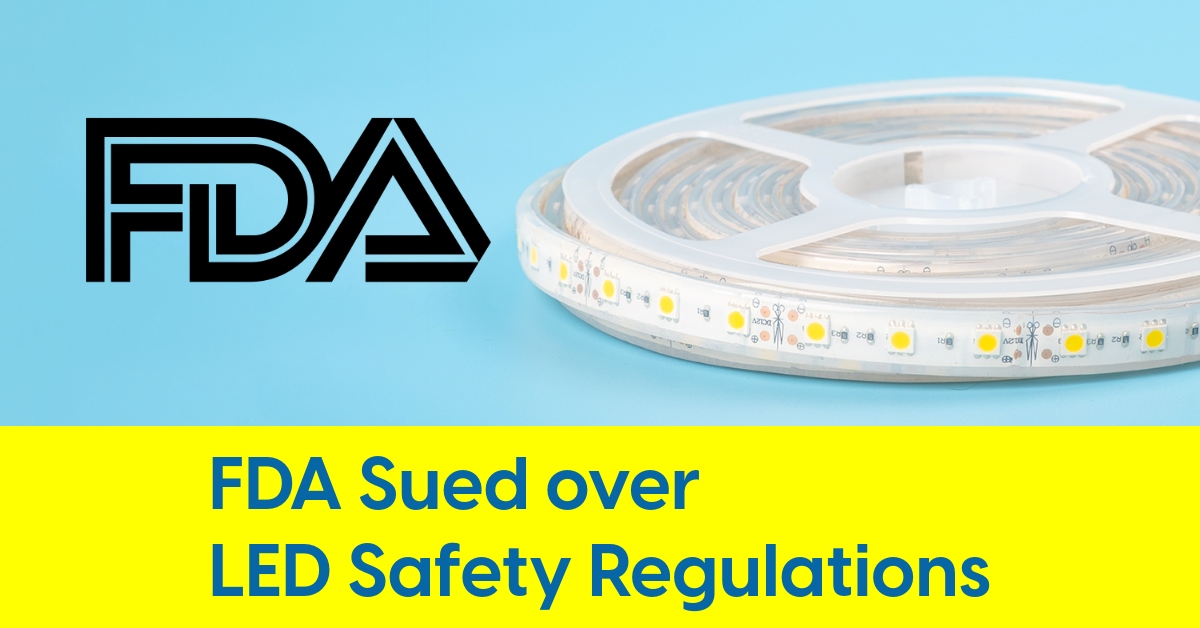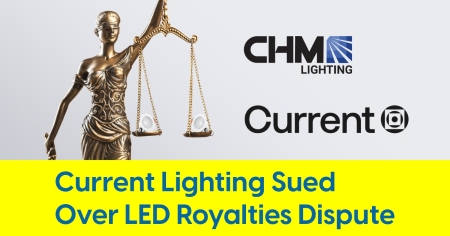January 29, 2024
FDA Sued over LED Safety Regulations

Mark Baker seeks FDA intervention to regulate flicker, intensity and color temperature of LED lighting products
Mark Baker, president of the Soft Lights Foundation and a former math teacher who claims to suffer adverse health effects from LED lighting, has filed a lawsuit against the U.S. Food and Drug Administration (FDA), alleging the agency failed to establish necessary performance standards for LED lighting products.
Filed in California federal court, the lawsuit accuses the FDA of failing to fulfill its Congressional mandate to regulate electromagnetic radiation from electronic products, including a wide array of LED-based items including streetlights, general service lamps and vehicle headlights. The absence of regulatory standards, according to Baker, has led to "irreparable harm" to millions, including Baker himself, and poses ongoing risks to public health and safety. The lawsuit seeks to compel the FDA to address the regulatory vacuum and mitigate the adverse impacts of LED technology on both human health and the environment.
In a Friday interview with Inside Lighting, Baker pointed out several aspects of LED lighting that, in his view, cause health issues for him and others. He highlighted square wave flicker, luminance and spectral power distribution as three areas needing regulation.
“The FDA has not published restrictions on luminance, spatial uniformity, dispersion characteristics, spectral power distribution, digital flicker, pulse width modulation, or flash characteristics for any LED product to protect public health and safety.”
- Baker v. FDA
The Allegations
Baker, who alleges to suffer from severe health symptoms due to LED exposure, argues that the FDA has neglected its duty under the Federal Food, Drug, and Cosmetic Act (FFDCA) and the Radiation Control for Health and Safety Act to minimize public exposure to unnecessary electronic product radiation and to establish performance standards for LED products.
Baker's complaint outlines a failure by the FDA to protect public health from the potentially harmful effects of visible radiation emitted by LED products. Despite the widespread use of LED technology in various applications—from streetlights and vehicle headlights to household and commercial lighting—Baker contends that the FDA has not published necessary performance standards for these products. This oversight, he argues, has not only compromised public health and safety but also caused him "irreparable harm," leading to a significant deterioration in his quality of life and ability to work.
“LED radiation is a significant human health hazard and has been documented to cause seizures, migraines, panic attacks, anxiety, nausea, fear, agitation, eye pain, and eye injury.”
- Baker v. FDA
Why the FDA?
Before focusing his legal efforts on the FDA, Mark Baker sought assistance and intervention from various federal agencies. His journey reflects an exhaustive search for accountability and action within the complex landscape of U.S. regulatory bodies, each with its own specific mandate and scope of authority.
Baker's inquiries and petitions extended to numerous agencies including the Consumer Product Safety Commission, Occupational Safety and Health Administration (OSHA) and the U.S. Department of Energy, among others. Many of these agencies, in their responses, indicated a deferral to the FDA's jurisdiction over radiation-emitting electronic products.
If the FDA were to regulate LED lighting technology, it wouldn't be the agency's first involvement in overseeing lighting products. In the 1980s, the FDA issued guidelines for high-intensity mercury vapor discharge lamps, stipulating that a lamp must either quickly self-extinguish under certain conditions to minimize UV radiation exposure or be clearly labeled and packaged with warnings about the risks of UV radiation.
Making the case
The complaint emphasizes the legislative background that mandates the FDA to oversee the safety of electronic products emitting electromagnetic radiation. It highlights the absence of FDA action in publishing performance standards for LED products, contrasting this with the established standards for other radiation-emitting devices like x-ray systems and microwave ovens.
Central to Baker's case is the assertion that LED radiation poses significant health risks, including eye strain, migraines, and exacerbation of neurological conditions. He criticizes the FDA's inaction as a failure to protect individuals with heightened sensitivity to LED radiation, which he argues constitutes a form of discrimination, especially against those with disabilities. The complaint details Baker's personal struggles, including job loss and mental health crises, purportedly linked to LED exposure.
Baker's request for coercive relief includes a series of orders directing the FDA to develop and publish performance standards for various LED products and to report to Congress on the health impacts of LED radiation.
An underdog story (or two) in the making:
Baker filed the case as an individual, representing himself pro se, without an attorney of record. If he continues with pro se representation, Baker's challenge will encompass two "David vs. Goliath" scenarios: an individual citizen facing a large government agency and a self-represented individual going up against what will likely be a team of highly skilled and experienced attorneys representing the FDA.
We will continue to monitor the case and report on significant developments.










